Are Arctic grizzly bears pointing the way to remote and previously undocumented Brooks Range salmon streams? According to a recent scientific paper published in the science journal Canadian Field-Naturalist, this might well be the case.
And those findings could have an impact on the construction of a new road that would allow a Canadian mining company to haul copper-laden ore from the Alaskan hinterlands to market. But more on that shortly.
A recent article in the Anchorage Daily News, crafted by Ned Rozell of the Geophysical Institute at the University of Alaska-Fairbanks, shows the findings of biologists working in Gates of the Arctic National Park and Preserve indicating that inland Arctic brown bears, just like their larger and more numerous coastal cousins, do, indeed, depend on salmon runs for significant amounts of their annual protein.
While the discovery that grizzly bears eat salmon is nothing new, the idea that brown bears hundreds of miles from the Bering and Chukchi seas prey on salmon is something not previously known. In one of the most austere montagne environments on the planet, well away from coastal salmon waters, National Park Service biologists are finding that grizzlies congregate on the banks of inland rivers where they fish for salmon.
Matthew Sorum, GANPP biologist, noted that the Park Service documented fishing brown bears on one remote river system about 300 miles via bushplane from Fairbanks. While that may not be a remarkable discovery in and of itself, what is remarkable is that the headwaters of the river system had not been previously documented as a spawning stream for migrating chum and chinook salmon.
“The headwaters of the Kobuk and Koyukuk rivers are extremely remote and difficult to access,” Sorum said in the ADN article. “In that region it’s possible that large chum runs have occurred for years without published documentation. It’s also possible that climate change is expanding the northern range limit, and that the chum runs we identified are a more recent phenomenon.”
In other words, it’s possible that a warming Arctic is actually enabling the expansion of salmon habitat and delivering salmon as a food source to inland grizzlies that would normally spend summer and fall fattening up on blueberries, Arctic grasses and, when they’re fortunate, ungulates like moose and caribou.
The scientific paper notes that, although salmon do occur in many Brooks Range rivers and streams, previous scientific research provided no proof that inland grizzlies used salmon to any great extent. This study, however, that used GPS collars attached to bears or reports from bush pilots who frequented the region, showed “that salmon are not only used by bears here, but are likely an important seasonal food resource in the region.”
Given that these remote headwaters have not previously been documented as hosting spawning runs of salmon, this finding is somewhat remarkable. That it could also be the product of a changing climate likely raises the eyebrows of biologists around the globe who are trying to get a handle on the impacts of climate change on everything from animals and plants to people.
Specifically, as noted by Rozell in the ADN article, this discovery could have significant impacts in the proposed construction of a new road that would stretch from the Dalton Highway (also known as the Haul Road or the Ice Road) to the native village of Ambler on the banks of the Kobuk River.
“We identified many areas heavily used by grizzly bears that overlap the proposed Ambler Road,” Sorum told Rozell.
So, here’s the rest of the story.
The purpose of the road would be to provide all-season vehicle access to the Ambler Mining District so Ambler Metals, LLC, a subsidiary of the Canadian company, Trilogy Metals, could truck ore containing copper and other metals to market. Just this summer, the federal Bureau of Land Management, along with the U.S. Army Corps of Engineers and the National Park Service, approved the 211-mile road-construction project, which would be constructed across about 20 miles of GANPP.
Obviously, road construction methods that occur in this region, given the findings that inland bears use far-swimming salmon as a significant source of protein, could be altered to ensure minimal impacts on the rivers and streams the road would cross, with the intent of protecting the newfound salmon and the bears that eat them.
But, of course, the issue is much more nuanced. The road is but one issue in this saga — there’s likely much more at stake.
In July, nine environmental groups, including the Sierra Club and the Wilderness Society, filed a lawsuit with the U.S. District Court of Alaska that challenges the road and details the mining operations that would occur in an otherwise wilderness landscape.
“The sole purpose of the Ambler Road is to access the Ambler Mining District, where copper and other metals would be extracted from open-pit mines,” the lawsuit reads. AIDEA (Alaska Industrial Development and Export Authority) would provide financing for the road, which would cost nearly $1 billion to build, operate and maintain, to serve as a private driveway for mining companies. Communities, tribes and other entities in the region have passed resolutions in opposition and have voiced serious concerns about the project.”
The proposed mines notwithstanding, the road itself would cross 2,900 streams and 11 significant rivers, including the Kobuk, a federally designated wild and scenic river. Construction of the road would also fill some 2,000 acres of wetlands. Salmon and bears would be among dozens of species that could be impacted by the road’s construction — the region’s waters are also inhabited by Arctic grayling, inconnu (sheefish) and northern pike, and the road could have in impact on migrating caribou herds, moose and other apex mammals, like wolves, foxes and wolverines.
The lawsuit is targeting U.S. Secretary of Interior David Bernhardt in his official governmental capacity, and claims that the myriad permits for everything from the road itself to its construction methods, bridges and long-term impact to this remote wilderness ignored scientific evidence that the area is inappropriate for a project of this scale. For instance, the plaintiffs claim that the erosion and potential discharge of pollutants from the road violate federal Clean Water Act standards.
Basically, according to the plaintiffs, the road construction approval process has been flawed, and ignores many bedrock environmental laws put in place to protect land and water resources.
Proponents of the project say the road’s construction is consistent with a promise made 40 years ago by the federal government that the designation of Gates of the Arctic National Park and Preserve would not impede access to minerals.
According to a pro-mining release, conspicuously published without byline or attribution in the Sierra Sun-Times, the Ambler Mining District encompasses one of the best-known deposits of high-quality copper in Alaska. It “also hosts significant quantities of cobalt and potentially other critical minerals. The proposed Ambler Road will provide the access necessary for the development and production of these critical minerals to further the national security interests of the United States,” the article claims.
Both the mining project and the approval of the Ambler Road have the stamp approval from Alaska’s U.S. Senate delegation — both Sen. Lisa Murkowski and Sen. Dan Sullivan have expressed support for the road’s construction to enable the extraction of minerals from the Ambler Mining District.





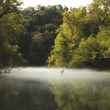

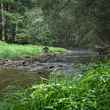



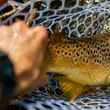




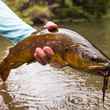
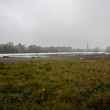




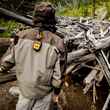



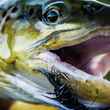

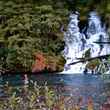

Comments